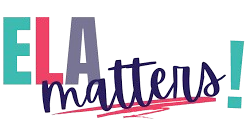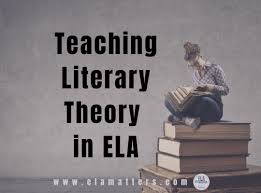Do you teach literary theory in your ELA classes?
Do you find it a challenge for you or students?
Have you thought about using a core text for different theories?
One core text to rule them all…
if I was a big Lord of the Rings fan this would be an even more poignant line!
Why one text for literary theory?
Familiarity! Students don’t need to tackle the new text AND the new theory. Instead, the theory is the focus with a text that’s comfortable for students.
If you’re in a school where you have a set of ready-assigned or required texts then this might be ideal. You can supplement with a core text and then zoom out to whichever story, poem, or novel might be on the required list of study.
This also provides the option of diversifying your theory choices. At my school grade 9 to 12 students will explore Reader Response, Formalism, (New) Historicism, Postmodernism, Psychoanalytic, Feminist, Marxist, Post-colonial, Structuralism/Post-Structuralism, as well as Gender/Queer theory. Many theories on this list are explored in grade 12 after students have had intro lessons throughout their other years of English courses.
That seems like a lot BUT the first three are what we do most often without realizing it’s a particular theory:
- We ask students what they think or feel about a book, its plot, or characters; this is Reader Response.
- We ask students about the structure of the plot, the use of imagery, and so on; this is Formalism.
- We ask students about what may have influenced the writing or reading of a text in its time or about the author and who they are/were when they were writing; this is New Historicism.
The others are a bit more layered but in discussions we often touch on power dynamics between characters, the formation of society, representation within the novels, etc. In this case many of the other theories are already being addressed, be it a bit more informally.
For these other theories more direct and structured teaching and learning is necessary for students to apply each theory to a text.
Enter the single text for use with almost all of the listed theories!
Which one text?
While there are quite a few texts that will work, my go-to is The Giving Tree by Shel Silverstein. I most often use hard copies of the book but in online learning I used this video of The Giving Tree. (I’ve built a collection of children’s books including copies of Silverstein through library book sales and/or local parent groups selling pre-loved books.)
This children’s story is simple in language and therefore accessible to nearly all students. The inclusion of images provides an additional layer of interpretation, which increases the text’s accessibility too.
So how does it work?
A strong introduction to the theory is necessary. What are the key concepts, ideas, and definitions students should know to have the background understanding of the literary theory? OWL Purdue has overviews that are useful or you can check out ready-made presentations here (includes full teacher notes, key analysis of Silverstein’s text, and suggestions for additional texts too).
After introducing the literary theory, students, usually in small groups, use provided questions to analyze the text. For example, with Marxist theory students ask who has the power in the dynamic between the boy and the tree. They might then make a supposition about which character best represents the proletariat and the bourgeoisie.
After applying the theory, students complete an individual exit ticket that asks them to share their best understanding using 1-2 specific examples from the book. In this way, you can assess who has understood what and who might need added support moving forward.
What are the drawbacks of a core text with so much literary theory?
The repetition of the singular text can be a bit much, particularly in a short course window. There have been some groans when, on literary theory four or five, I bring out the copies of The Giving Tree. But by then we’re usually more efficient so we don’t have to spend as much time with the book.
If there is significant push-back or if the core text doesn’t work for the theory without making some leaps, I always have back-up texts such as short poems and/or some microfiction. For example, when teaching post-colonial theory I might use Wole Soyinka’s “Telephone Conversation” instead.
After so many years of teaching literary theory, I have found this approach to be quite successful with students. Try it for yourself and let us know how it goes…

